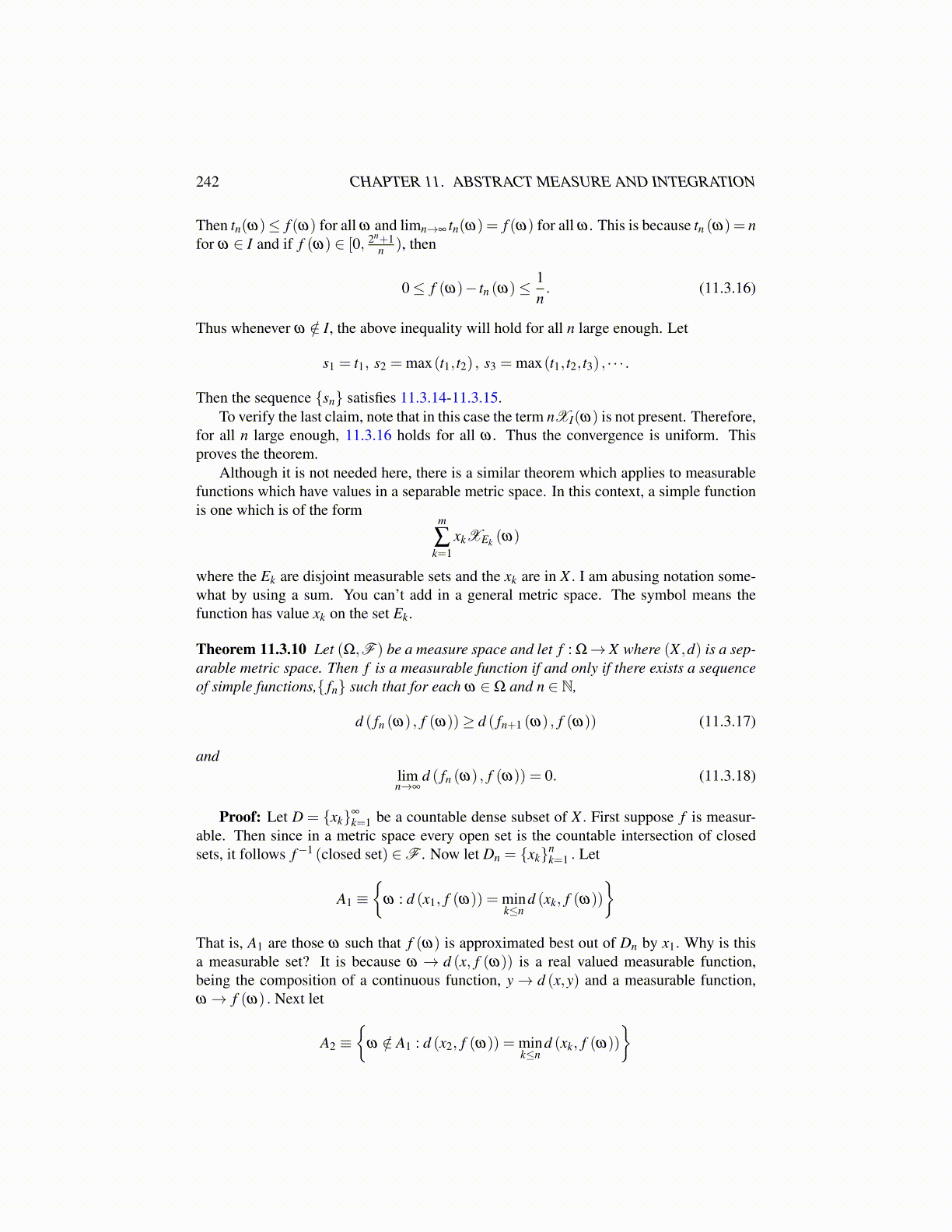
242 CHAPTER 11. ABSTRACT MEASURE AND INTEGRATION
Then tn(ω)≤ f (ω) for all ω and limn→∞ tn(ω) = f (ω) for all ω . This is because tn (ω) = nfor ω ∈ I and if f (ω) ∈ [0, 2n+1
n ), then
0≤ f (ω)− tn (ω)≤ 1n. (11.3.16)
Thus whenever ω /∈ I, the above inequality will hold for all n large enough. Let
s1 = t1, s2 = max(t1, t2) , s3 = max(t1, t2, t3) , · · · .
Then the sequence {sn} satisfies 11.3.14-11.3.15.To verify the last claim, note that in this case the term nXI(ω) is not present. Therefore,
for all n large enough, 11.3.16 holds for all ω . Thus the convergence is uniform. Thisproves the theorem.
Although it is not needed here, there is a similar theorem which applies to measurablefunctions which have values in a separable metric space. In this context, a simple functionis one which is of the form
m
∑k=1
xkXEk (ω)
where the Ek are disjoint measurable sets and the xk are in X . I am abusing notation some-what by using a sum. You can’t add in a general metric space. The symbol means thefunction has value xk on the set Ek.
Theorem 11.3.10 Let (Ω,F ) be a measure space and let f : Ω→ X where (X ,d) is a sep-arable metric space. Then f is a measurable function if and only if there exists a sequenceof simple functions,{ fn} such that for each ω ∈Ω and n ∈ N,
d ( fn (ω) , f (ω))≥ d ( fn+1 (ω) , f (ω)) (11.3.17)
andlimn→∞
d ( fn (ω) , f (ω)) = 0. (11.3.18)
Proof: Let D = {xk}∞
k=1 be a countable dense subset of X . First suppose f is measur-able. Then since in a metric space every open set is the countable intersection of closedsets, it follows f−1 (closed set) ∈F . Now let Dn = {xk}n
k=1 . Let
A1 ≡{
ω : d (x1, f (ω)) = mink≤n
d (xk, f (ω))
}That is, A1 are those ω such that f (ω) is approximated best out of Dn by x1. Why is thisa measurable set? It is because ω → d (x, f (ω)) is a real valued measurable function,being the composition of a continuous function, y→ d (x,y) and a measurable function,ω → f (ω) . Next let
A2 ≡{
ω /∈ A1 : d (x2, f (ω)) = mink≤n
d (xk, f (ω))
}